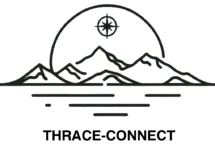Ancient Thrace lay at the edge of the Greek world, balancing between the familiar and the unknown. Yet it was never isolated: already in the Archaic period, Aegean Thrace was closely connected with southern Greece through maritime trade routes leading to the Thracian coasts. Land routes linked the region to inland Thrace, while in Roman times the famous Via Egnatia united East and West. Thrace thus became a crucial crossroads, where the Rhodope mountains acted at times as a boundary and at other times as a bridge between different worlds.
The THRACE-CONNECT project explores these multifaceted relationships and interactions, examining how mountain and lowland landscapes served as corridors of communication and exchange between the Thracian and Greek worlds, from the Archaic to the Roman period.
The research combines archaeological evidence with literary and historical sources, enriched by the use of geospatial technologies (GIS) and advanced visualization techniques. These tools make it possible to reconstruct ancient landscapes, study routes and communication networks, and better understand the social and cultural processes that shaped them.
In this way, THRACE-CONNECT aims not only to highlight new aspects of Thrace’s history and culture but also to create a unified and openly accessible dataset that today remains scattered. By bringing together scientific research and digital technologies, the project opens new pathways for understanding ancient Thrace while offering valuable tools with applications for other regions and contemporary challenges.
